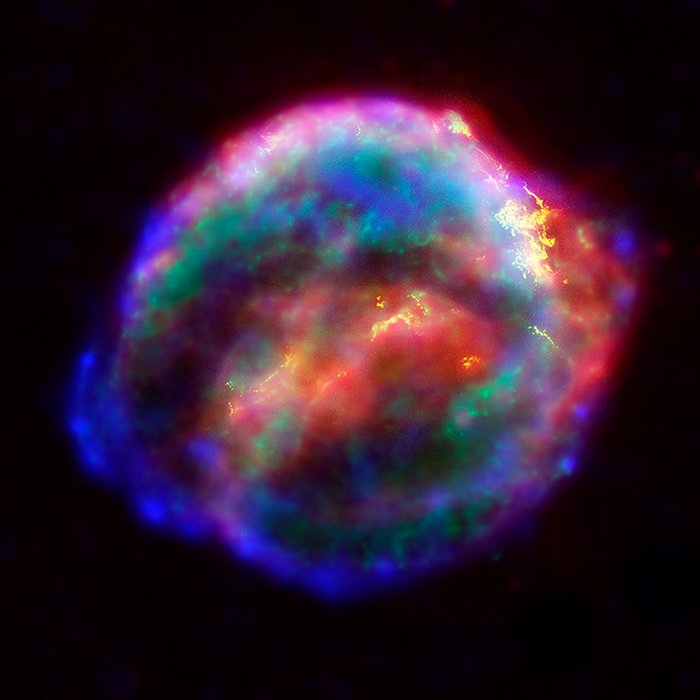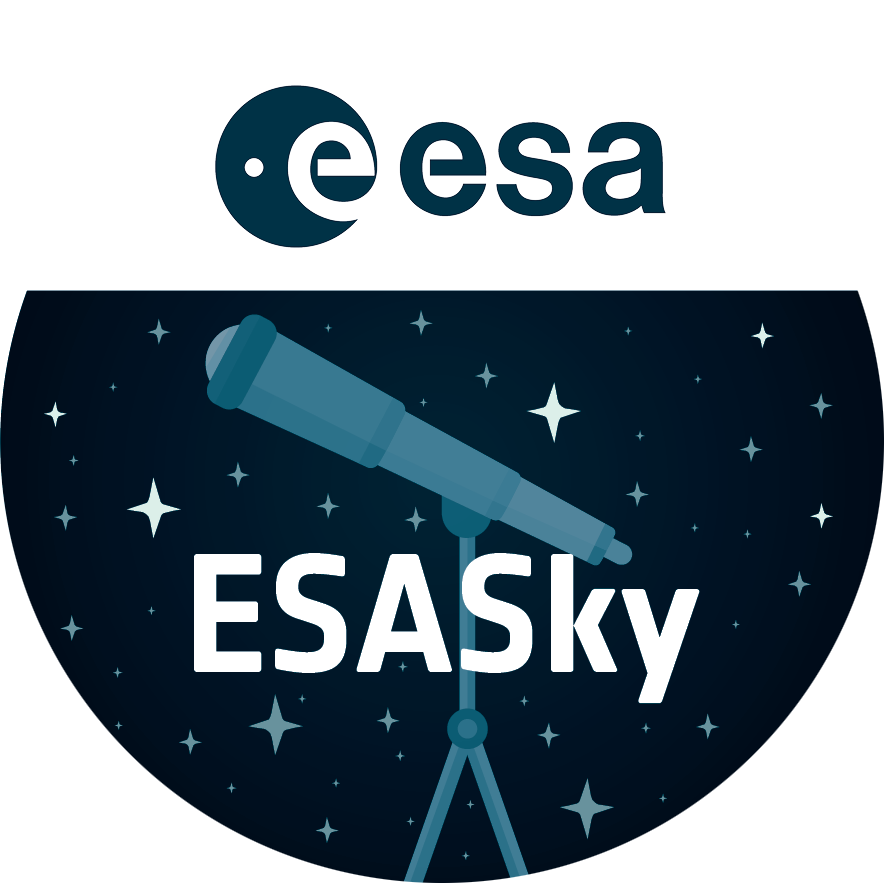NASA's Great Observatories Provide a Detailed View of Kepler's Supernova Remnant
NASA's three Great Observatories - the Hubble Space Telescope, the Spitzer Space Telescope, and the Chandra X-ray Observatory - joined forces to probe the expanding remains of a supernova, called Kepler's supernova remnant, first seen 400 years ago by sky watchers, including famous astronomer Johannes Kepler.
The combined image unveils a bubble-shaped shroud of gas and dust that is 14 light-years wide and is expanding at 4 million miles per hour (2,000 kilometers per second). Observations from each telescope highlight distinct features of the supernova remnant, a fast-moving shell of iron-rich material from the exploded star, surrounded by an expanding shock wave that is sweeping up interstellar gas and dust.
Credit:About the Image
About the Object
| Name: | Kepler's SN |
|---|---|
| Type: | Milky Way : Nebula : Type : Supernova Remnant |
| Distance: | 13000 light years |
| Constellation: | Ophiuchus |
| Category: | Nebulae |
Classic Wallpapers
Coordinates
| Position (RA): | 17 30 41.50 |
|---|---|
| Position (Dec): | -21° 29' 33.17" |
| Field of view: | 4.96 x 4.96 arcminutes |
| Orientation: | North is 0.1° left of vertical |
Colours & filters
| Band | Wavelength | Telescope |
|---|---|---|
| X-ray |
Chandra
ACIS | |
| X-ray |
Chandra
ACIS | |
| Optical H-alpha + Nii | 658 nm | Hubble Space Telescope |


